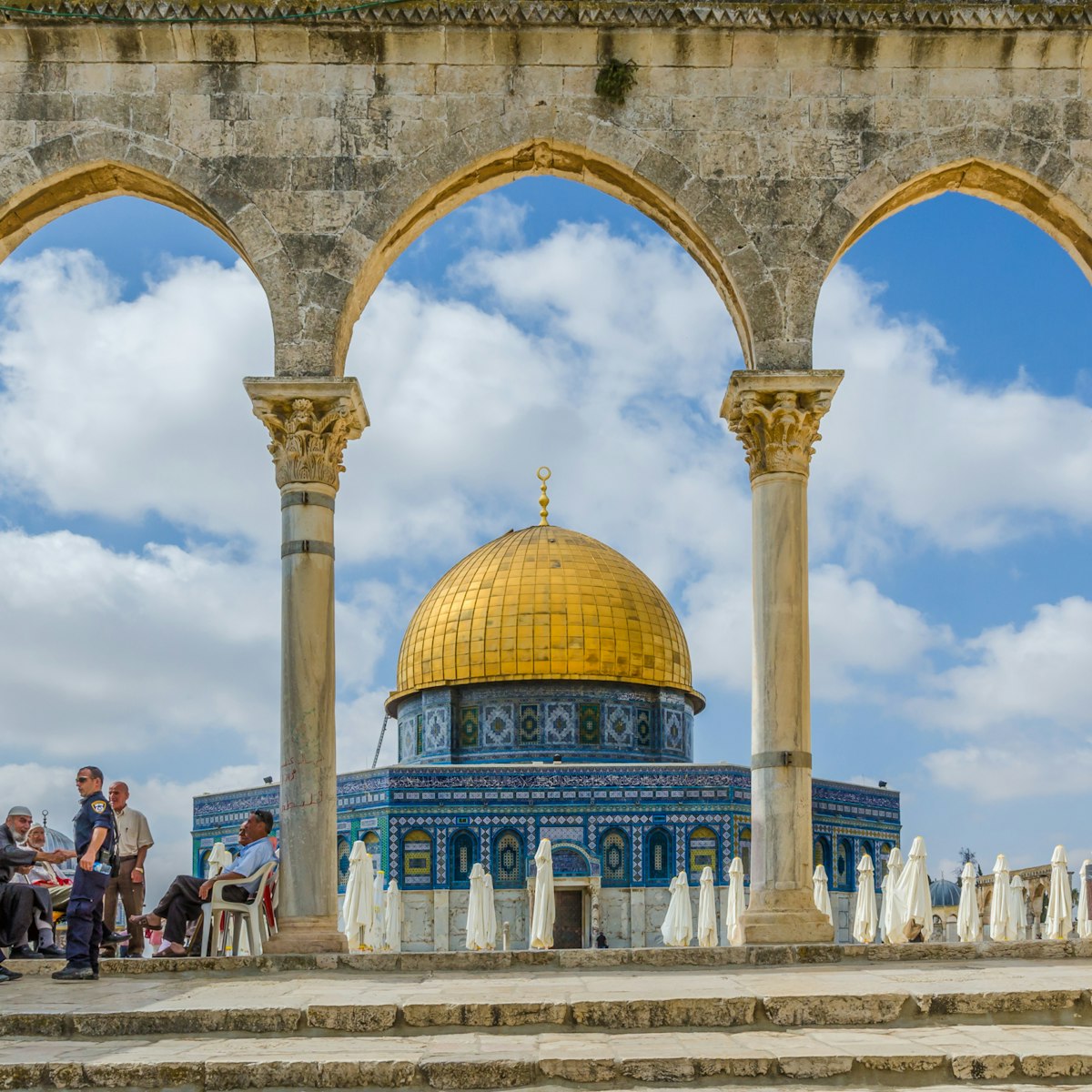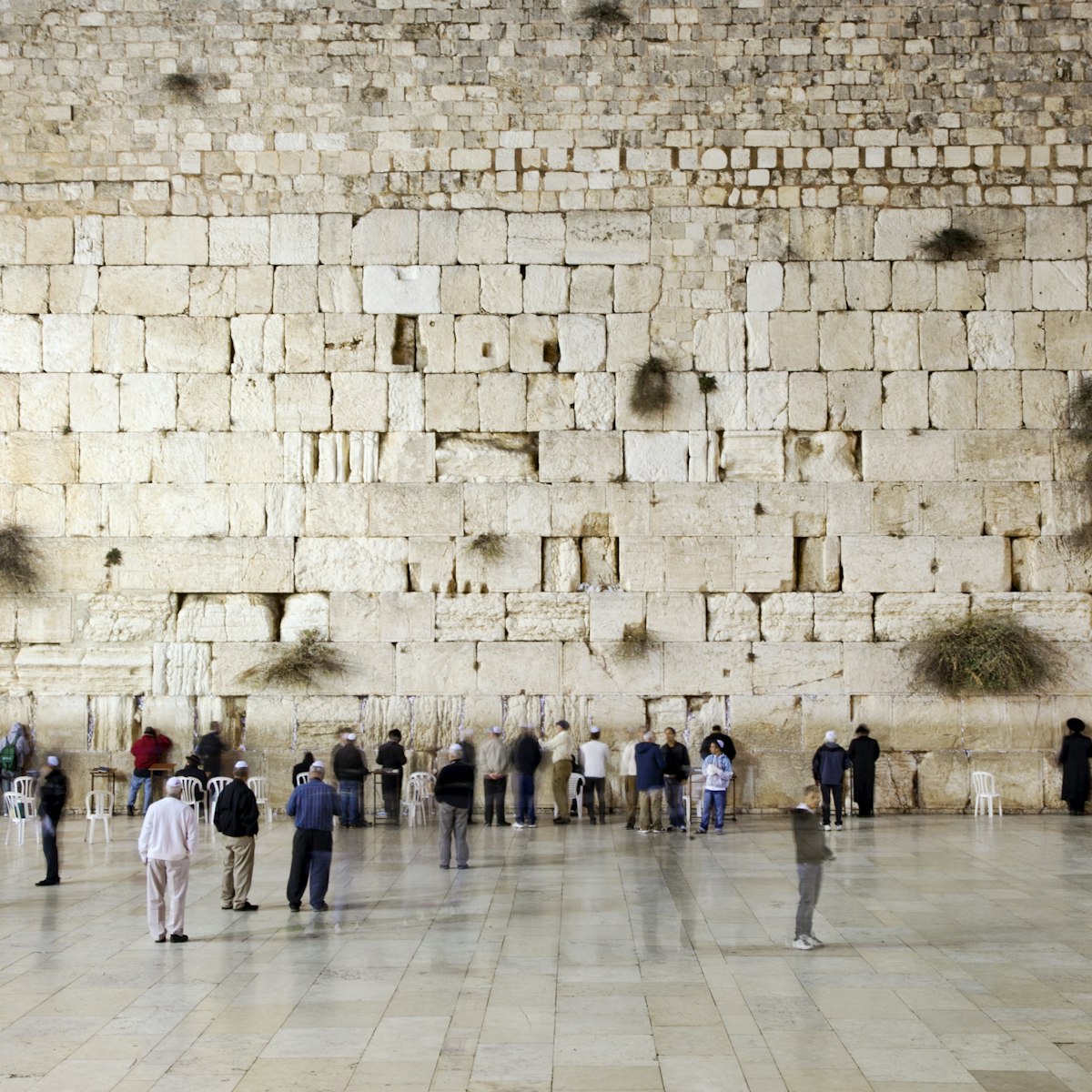The jewel in the crown of Temple Mount/Al Haram Ash Sharif is the gold-plated Dome of the Rock, the enduring symbol of the city and one of the most photographed buildings on earth. As its name suggests, the dome covers a slab of stone sacred to both the Muslim and Jewish faiths. According to Jewish tradition, it was here that Abraham prepared to sacrifice his son. Islamic tradition has the Prophet Muhammad ascending to heaven from this spot.
Only Muslims can enter the temple, though modestly attired visitors of all creeds can see it from the outside as part of their walk around the plaza.
The building was constructed between 688 and 691 CE under the patronage of the Umayyad caliph Abd Al Malik. His motives were shrewd as well as pious – the caliph wanted to instil a sense of pride in the local Muslim population and keep them loyal to Islam. He also wanted to make a statement to Jews and Christians: Islam was both righteous and all-powerful, so it could build a structure more splendid than any Christian church on a location that was the location of the Jewish Holy of Holies, thus superseding both religions.
Malik had his Byzantine architects take as their model the rotunda of the Holy Sepulchre. But instead of the dark, gloomy interiors or austere stone facades of the Christian structures, their mosque was covered inside and out with a bright confection of mosaics and scrolled verses from the Quran, while the crowning dome was covered in solid gold that shone as a beacon for Islam.
A plaque was laid inside honouring Malik and giving the date of construction. Two hundred years later the Abbasid caliph Al Mamun altered it to claim credit for himself, neglecting to amend the original date. Briefly repurposed as a church under the Crusaders, it promptly became an Islamic shrine again in the 12th century under Saladin. In 1545, Suleiman the Magnificent ordered that the much-weathered exterior mosaics be removed and replaced with tiles. These were again replaced during a major restoration in the 20th century. The original gold dome also disappeared long ago, and the dome you see today is covered with 5000 gold plates donated by the late King Hussein of Jordan. The 80kg of gold cost the king US$8.2 million – he sold one of his homes in London to pay for it.
Essentially, what you see today is the building as conceived by Abd Al Malik. Inside, lying centrally under the 20m-high dome and ringed by a wooden fence, is the rock from which it is said Muhammad began his miraj (ascension to heaven). According to the Quran, Muhammad pushed the stone down with his foot, leaving a footprint on the rock (supposedly still visible in one corner). Jewish tradition also has it that this marks the centre of the world. Steps below the rock lead to a cave known as the Well of Souls, where according to medieval legends the voices of the dead are said to be heard falling into the river of paradise and on to eternity. The mihrab (niche indicating the direction of Mecca) in the sanctuary is said to be the the oldest in the Islamic world.
Note that the whole Temple Mount/Al Haram Ash Sharif complex is often closed to visitors during times of political unrest.








